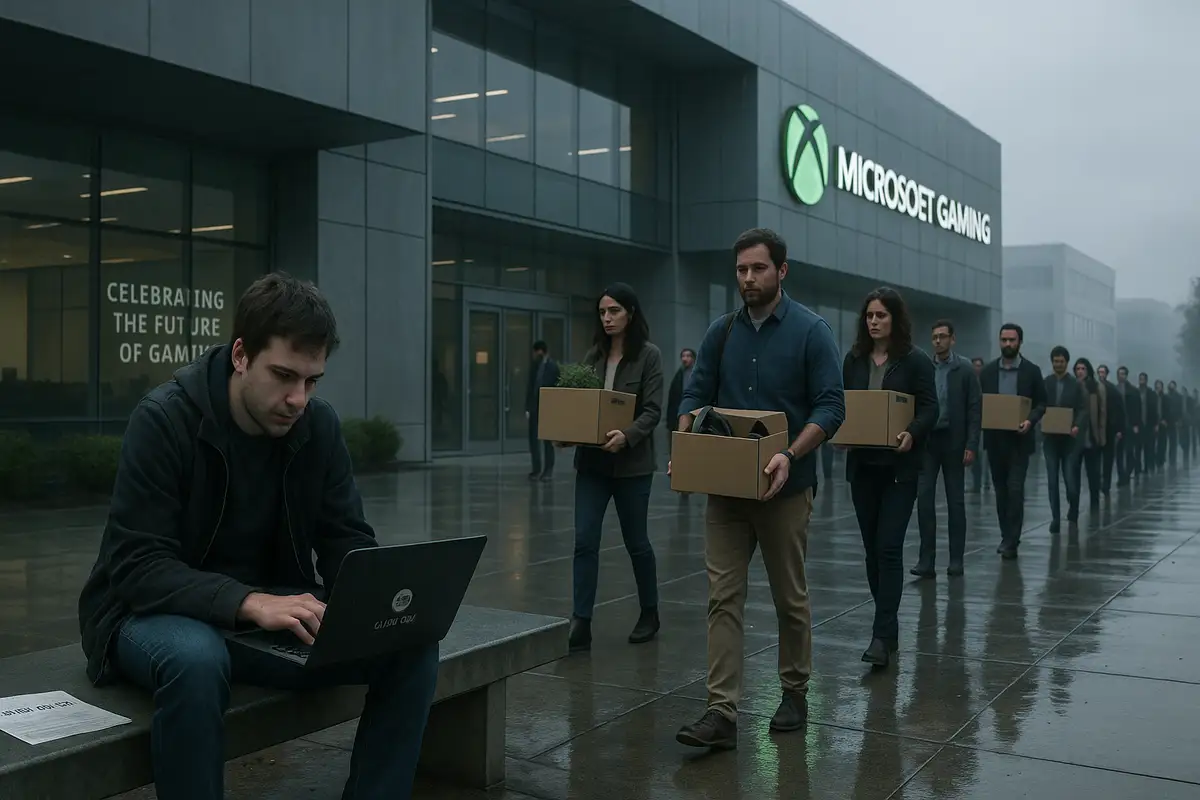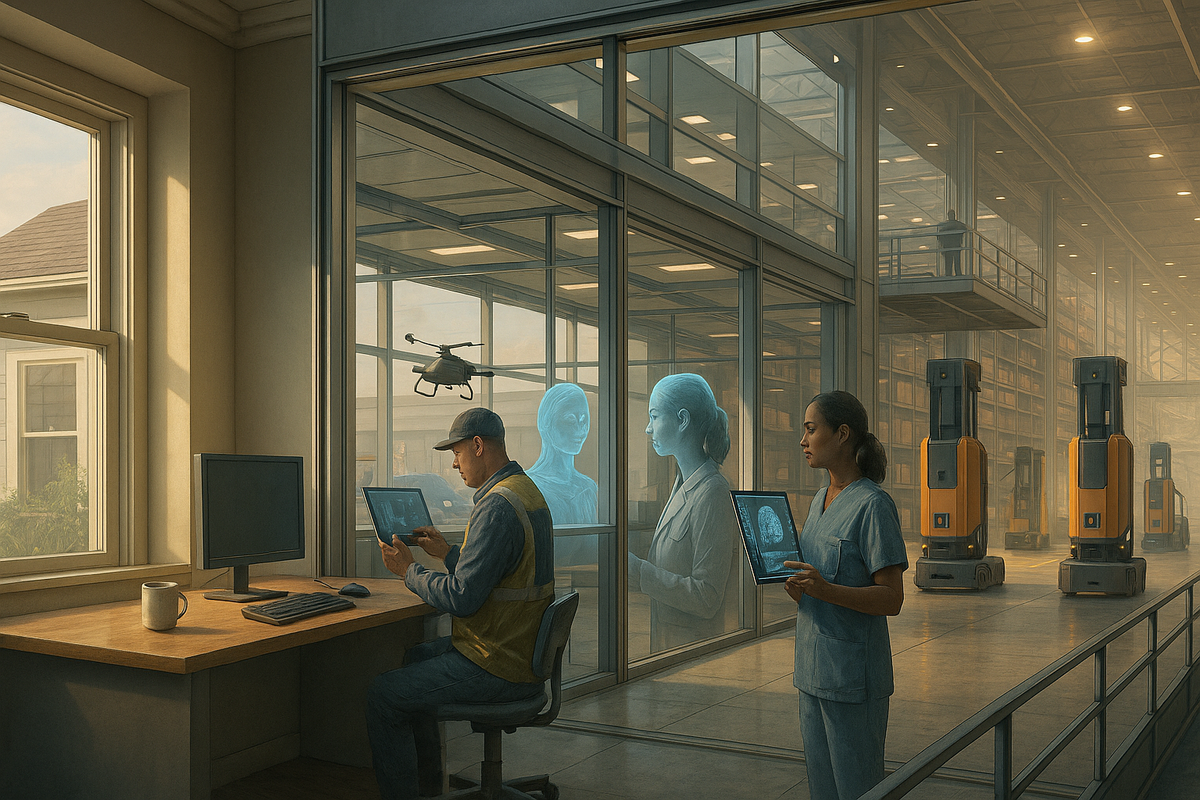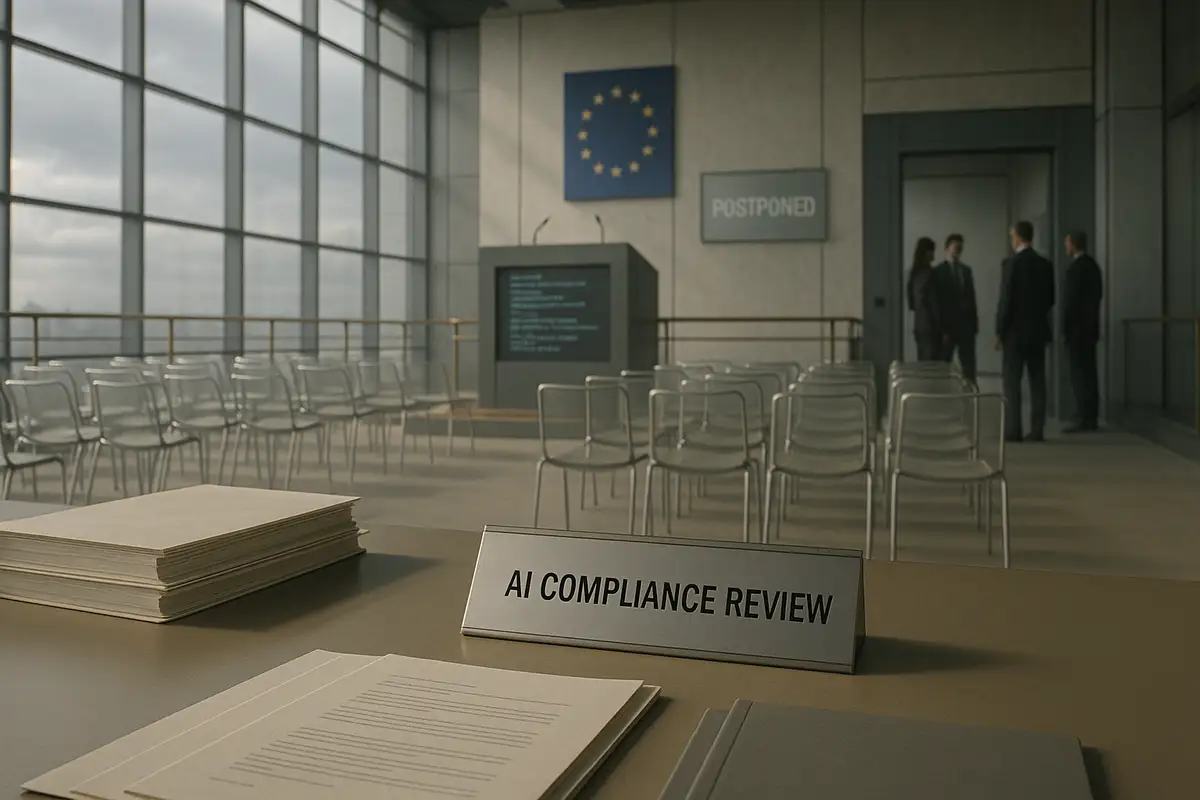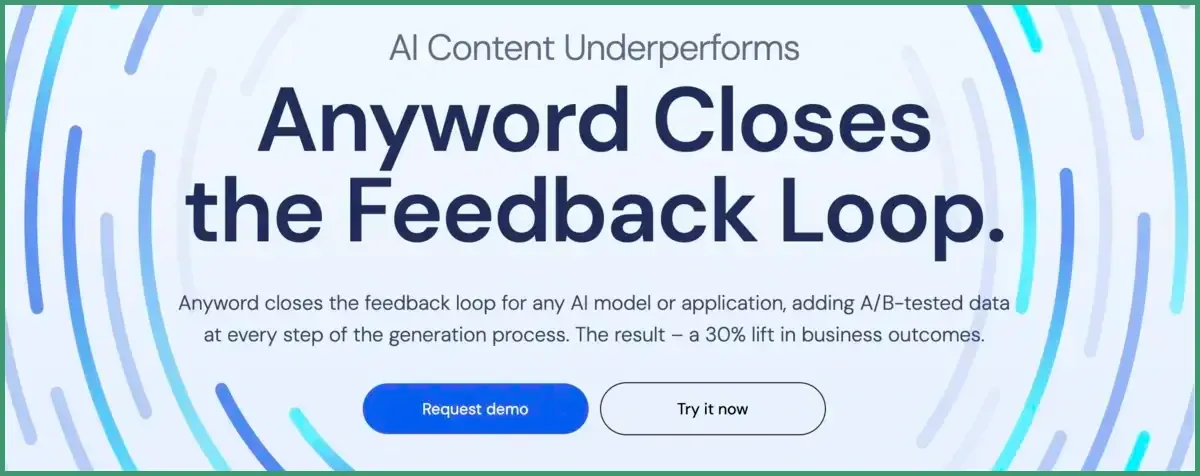Five Replace Fifty. Chips Stay Home.
Good Morning from San Francisco, Coca-Cola swapped fifty crew members for five AI specialists. Production time collapsed from a year

Good Morning from San Francisco,
Microsoft axed 9,000 workers Wednesday. Record profits didn't save them. The company made $26 billion last quarter and hit all-time stock highs. Then it fired 4% of its workforce anyway.
CEOs stopped pretending. Ford's chief says AI will replace half of white-collar America. JPMorgan expects 10% cuts. Amazon's CEO warned employees about "once-in-a-lifetime" displacement.
The corporate politeness phase has ended. AI efficiency beats human employment. Profitable companies now cut people, not costs.
Stay curious,
Marcus Schuler

Microsoft laid off 9,000 employees Wednesday. The cuts hit 4% of its global workforce across teams and locations. This follows 6,000 cuts in May and 300 more in June.
The timing matters. Microsoft just reported $26 billion in net income on $70 billion revenue. Stock hit a record $497.45 per share last month. The company ranks as the world's second most valuable, behind only Nvidia.
Gaming took the hardest hit. Turn 10 Studios lost nearly 50% of staff. Rare's Everwild got canceled after 10 years in development. Multiple Call of Duty support studios faced cuts.
Phil Spencer, Microsoft's gaming chief, said the cuts would "remove layers of management to increase agility." Corporate speak for: middle managers cost money, AI doesn't.
This comes as CEOs abandon careful language about AI displacement. Ford's Jim Farley now says AI will "replace literally half of all white-collar workers." JPMorgan predicts 10% workforce cuts. Amazon's Andy Jassy told employees to expect smaller teams.
The shift is stark. Executives once hedged about job losses. Now they issue dire predictions while profits soar.
Why this matters:




Prompt:
vitamin design capsule c With Forest and Text "forest" inside, product photography, White background, professional studio lighting, sharp focus., high detail, hdr, dslr high, camera-Resolution photography

Forty-five European business leaders just told the EU to pump the brakes on its AI Act. The signatories read like a who's who of European industry: ASML, Airbus, Mercedes-Benz, Mistral AI, and dozens more.
Their message is blunt. The regulations are unclear, overlapping, and increasingly complex. The companies want a two-year pause on implementation while Brussels sorts out the mess.
The timing reveals the chaos. AI models should comply by August. But the EU still hasn't finished writing the basic guidelines companies need to follow. The "code of practice" that explains how to actually comply with the law keeps getting delayed.
Companies face a nightmare scenario. Each of the 27 EU member states interprets the rules differently. Compliance becomes a costly guessing game across multiple jurisdictions.
The competitive threat looms large. If US companies like OpenAI and Meta pull out of Europe over regulatory burden, European firms lose access to the best AI tools. They'd compete globally with inferior technology.
The EU wanted to lead on AI regulation. Instead, it created regulatory uncertainty that could kneecap its own companies.
Why this matters:

Develop a detailed migration plan for transitioning a WordPress website to a custom React front-end application. Please address the following key areas:
Current State Analysis:
Technical Architecture:
Migration Strategy:
Implementation Considerations:
Success Metrics:
Please provide specific recommendations, potential challenges, and actionable next steps for each area.
Meta is training its AI Studio chatbots to send unprompted follow-up messages to users, hoping to boost engagement by teaching artificial companions to reach out first about past conversations. The feature caps follow-ups at 14 days and requires users to have sent at least five messages before the AI starts checking in with gems like "Hey, thinking of you."
Robinhood launched tokenized shares of OpenAI and SpaceX for European users, prompting the AI company to immediately distance itself from the offering. OpenAI warned that the tokens aren't real equity, required no company approval, and told users to "please be careful" with Robinhood's latest crypto experiment.
OpenAI agreed to rent 4.5 gigawatts of data center power from Oracle as part of its Stargate project, enough electricity to keep 3.4 million American homes running. The deal represents an unprecedented energy commitment for artificial intelligence and makes up a significant portion of Oracle's newly announced $30 billion cloud contract.
ChatGPT referrals to news sites jumped 25 times to 25 million visits in 2025, but that small boost barely registers against the massive traffic losses from AI-powered search results. Nearly 69% of news searches now end without anyone clicking through to actual news websites, up from 56% before Google launched AI Overviews last year.
JD.com and Ant Group are lobbying China's central bank to authorize yuan-backed stablecoins in Hong Kong, hoping to counter the overwhelming dominance of dollar-pegged cryptocurrencies in global trade. The push marks a notable about-face for a country that banned all cryptocurrencies in 2021, driven by concerns that Chinese exporters increasingly use dollar stablecoins while the yuan's global payment share hits a two-year low.
Ripple filed for a national banking license Wednesday, joining the growing line of crypto companies trying to break into traditional finance ahead of expected legislation that would make such licenses mandatory. The cross-border payments company also applied for a Federal Reserve master account, which would let it custody reserves directly with the Fed and issue stablecoins outside normal banking hours.
Scientists trained an AI system called Centaur on 10 million psychology experiment responses, teaching it to mimic human thinking patterns, quirks and errors included. The AI now fails logic tests and makes poor choices just like people do, proving that artificial intelligence has finally mastered the art of being disappointingly human.
At least 20 Spanish schoolgirls aged 11 to 17 became victims when local boys used the AI app Clothoff to create fake nude images that spread through WhatsApp groups, leading to street harassment and bullying. The app's creators, based in Eastern Europe, now process 200,000 fake images daily and generate €3 million annually while planning marketing campaigns that target misogynistic audiences and Andrew Tate fans.
One recent Zoom call had six humans and ten AI note-taking bots, as workers increasingly send artificial representatives to meetings they'd rather avoid. The trend creates awkward workplace dynamics where people talk to walls of silent transcription apps while their actual colleagues review summaries later from the comfort of their desks.
A Yale student created lightweight smart glasses that transcribe conversations in real-time for people who are hard of hearing, projecting subtitles directly onto the lenses for $377 plus a monthly fee. The glasses work so well they can even detect when conversations get awkward, which happened immediately during testing when the AI labeled both the founder and a journalist as socially uncomfortable.

Anyword writes marketing copy and predicts how well it will perform before you use it. The AI scores each version based on what typically converts best. You can test different versions to see which gets more clicks and sales.
Tutorial:
URL: https://anyword.com/

Hans-Joachim Queisser died June 27 at age 93. He was among the last people who worked inside Silicon Valley's legendary fruit barn.
Queisser arrived in Mountain View in 1959 with a fresh physics PhD and a Green Card. He found Nobel laureate William Shockley running a failing electronics company from a converted fruit shed. Eight key employees had just quit in corporate mutiny. Among the deserters: future Intel founders Gordon Moore and Robert Noyce.
Most sane people would have fled. Queisser stayed.

He worked with Shockley on solar cells for the space program. Together they calculated the theoretical maximum efficiency of silicon solar panels: 31%. The Shockley-Queisser limit became gospel. Solar manufacturers still chase that number today.
Shockley's company collapsed anyway. Queisser moved to Bell Labs, where he invented high-power infrared LEDs. Those devices lurk inside every TV remote.
He returned to Germany in 1966, founded the Max Planck Institute for Solid State Research in Stuttgart, and spent decades trying to recreate Silicon Valley's magic in Europe.
Why this matters:

TranscribeGlass transforms deaf and hard-of-hearing lives with smart glasses that beam live captions into users' field of view. Think movie subtitles, but for every conversation. 🎬
• The Founders
Founded 2018 by Madhav Lavakare (started as Delhi high schooler's empathy project) and Tom Pritsky (Stanford grad with hearing loss who joined 2021). Small rotating team. Connecticut-based Public Benefit Corp born from wanting classmates to stop dropping out.
• The Product
Real-time speech transcription projected onto lightweight glasses (38g). Core strengths: $389 price crushes $4,999 competitors, 300ms latency beats human reaction time, works offline when WiFi dies. Handles noisy coffee shops, identifies multiple speakers, runs all day on Vuzix Z100 hardware partnership.
• The Competition
XanderGlasses charges luxury prices for audiology clinics. XRAI Glass tethers to phones awkwardly. Google dabbled then retreated. Meta focuses on broader AR agenda. TranscribeGlass owns the affordable captioning niche while tech giants chase shinier objects.
• Financing
Bootstrapped on hackathon prizes and $150K grants before seed round from AssisTech Foundation and others. 15,000+ pre-orders validate demand without marketing blitz. Valuation undisclosed but likely single-digit millions - founders prioritize mission over inflated metrics.
• The Future ⭐⭐⭐⭐⭐
Hardware manufacturing remains treacherous, but fundamentals sparkle: massive addressable market, first-mover advantage, viral social proof. Seven-year development cycle ending with 2025 launch tests whether teenage vision becomes mainstream reality. If execution matches ambition, TranscribeGlass could mainstream live captions like Netflix did streaming.
Get the 5-minute Silicon Valley AI briefing, every weekday morning — free.